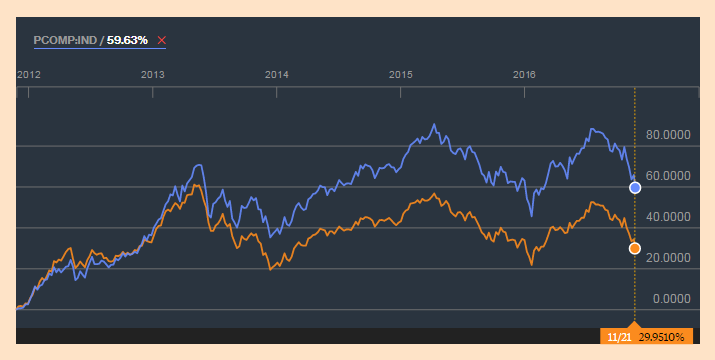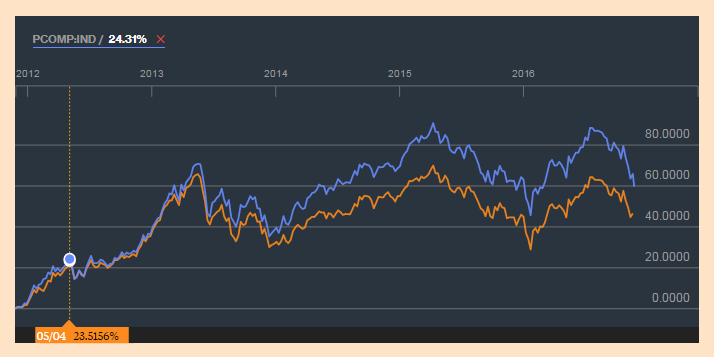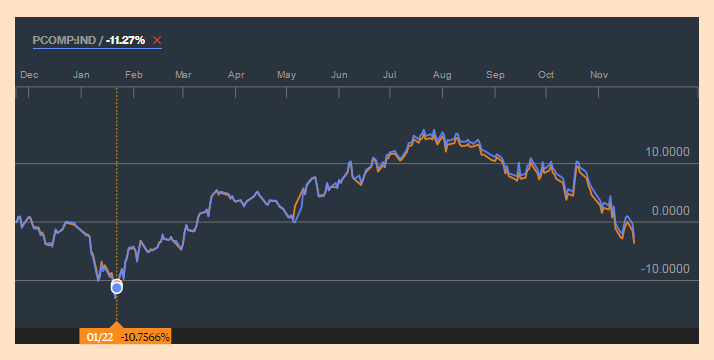Variable Universal Life (VUL) insurance is one of the most popular types of life insurance sold today. One of its main selling points against traditional life insurance is that it has an investment component, meaning that in addition to the guaranteed death benefit you receive, it also accumulates a cash value that is invested as part of your premiums.
This option makes sense for people who do not have the time or the interest in investing their own money. They just want to let others handle their own money and at least have more returns compared to letting their cash sit in their house or in the bank. However, as conscious investors we need to be aware that VUL insurance may at times not be the best option for us in terms of value for money. This article will explore the different aspects of VUL insurance and how we can analyze if a particular product best suits us.
There is another type of life insurance called Term Insurance which is more of a “traditional” life insurance. A Term Insurance basically guarantees a death benefit for a fixed premium in a given term (e.g. 5 years, 10 years, or 20 years), but when the term ends, the premiums that you paid will not be given back to you and everything goes to the insurance company. As with the general concept of life insurance, you will “win” (meaning you get the benefit) when you die. As most people prefer not to die soon and will do anything to prevent death, the probability of Term Insurance paying out is also low.
This reality is also one of the arguments used by life insurance agents against buying Term Insurance, and that you need to get VUL insurance instead. In the case of VUL, when you do not die at a given term you can still get your money back (and potentially some more) because your policy has an investment component that grows part of your premium through investments.
Sounds like a good deal, right?
VUL vs BTID
In the Personal Finance space, there is an ongoing debate between buying VUL insurance and buying Term Insurance. One side of the argument is that you can get better returns and better value for your money if you purchase Term Insurance and then invest the difference (the difference of cost compared to the VUL premiums). This is called Buy Term and Invest the Difference (BTID). Let’s say that the VUL premium per year amounts to ₱50,000 and the Term premium is ₱20,000 for the same amount of death benefit. The BTID argument is that you can invest the remaining ₱30,000 yourself and by doing this you can surpass the cash value of the VUL insurance.
Is this argument valid? It depends on two main factors that you can use to analyze whether to purchase VUL or not: Rate of Return and Fees.
Rate of Return
Insurance products usually invest the premiums they receive in paper assets such as treasury bills, bonds and stocks. These assets are also within reach of an individual investor via individual stocks, bond certificates, UITFs and mutual funds. In VUL products, you usually have the option to choose the kind of fund you want your premiums to be invested in: Bond Funds, Balanced Funds, Equity Funds and several denominations of each.
Since the investment vehicles that the insurance company uses can also be used by individual investors, we can assume that the rate of return is going to be the same.
You may ask, “How is this so? The insurance company hires expert investment managers so they should be able to grow my money more than I can!”
In this case let’s look at the data comparing the returns of an insurance equity fund with the Philippine Stock Exchange Index (PSEI). The PSEI is a common benchmark for UITFs or Mutual Funds in the Philippines. It comprises of large companies that fall within a specific criteria set by the Philippine Stock Exchange. Investment managers try to outperform the index as a means of determining whether their fund allocation of stocks deliver the greatest level of return for a given risk.
From here we will explore real-life comparisons of insurance company funds (used to invest your premiums) and the PSEI (also known for the ticker PCOMP:IND). We will only consider equity funds (or funds that invest in stocks) and not bonds to have a valid comparison with the PSEI since this is the stock index. The corresponding fees will also be shown and these will be explained in more detail in the next section.
Case 1: Insurance Company A Strategic Growth Fund

| Front-load Fee | 3.0% |
| Back-load Fee | 0% |
| Management Fee | 2.0% |
Case 2: Insurance Company B Equity Fund

| Front-load Fee | 0% |
| Back-load Fee | 5.0% |
| Management Fee | 2.0% |
Case 3: Insurance Company A Equity Index Fund

| Front-load Fee | 3.0% |
| Back-load Fee | 5.0% |
| Management Fee | 1.5% |
Fees
As the examples above show, there are some fees associated with funds inside a VUL. These are:
Front-load fee: this amount is deducted to your initial investment prior to investing your money, and is typically set up as a commission or a sales charge. For example, if you want to invest ₱10,000 with a front-load fee of 3%, the amount of money that is actually invested is reduced to ₱9,700.
Back-load fee: this amount is deducted to the present value of your investment once you want to sell your shares/units of a fund. For example, if your ₱10,000 investment doubles and grows into ₱20,000, the insurance company takes ₱1000 as back-load fee assuming a 5% rate.
Management fee: this amount is deducted per month or per year to the total value of your investment. For example, if the total amount of your investments in a fund is ₱10,000 assuming a 2% management fee, P200 will be deducted to your account for that year.
You will notice that these fees reduce the amount that you get from your investment. Therefore it is important that we look at the Fees section of a VUL proposal and try to understand all the types of fees that are indicated.
This aspect is where doing your own investments can be beneficial. By planning on which funds you invest in, you can minimize the fees and get more out of your money. For this type of investment, index funds are very useful since they usually have the lowest fees in any fund category. Since index funds just follow the allocation of a particular index (such as the PSEI), there is no need for complex fundamental and technical analysis and so it reduces the fees associated with hiring investment managers.
In the following illustration we will assume the following fees for an Equity Index Fund provided by Bank A (based from real-life examples):
| Front-load Fee | 0% |
| Back-load Fee | 0% |
| Management Fee | 1.0% |
And the following fees for the Insurance Equity Fund:
| Front-load Fee | 3% |
| Back-load Fee | 5% |
| Management Fee | 1.5% |
We will also assume an annual rate of return of 10%. In the previous section we learned that most of the time, the investment funds offered by insurance companies perform below the index, but to make this example simpler we will assume that the insurance investment fund has the same 10% annual return.
Each year, we will add ₱10,000 to each of the funds and then calculate the returns after 30 years.
| Year | Insurance Equity Fund | Equity Index Fund |
|---|---|---|
| 1 | 9,700 | 10,000 |
| 2 | 20,224 | 20,900 |
| 3 | 31,643 | 32,781 |
| 4 | 44,033 | 45,731 |
| 5 | 57,476 | 59,847 |
| 10 | 143,900 | 151,929 |
| 15 | 273,853 | 293,609 |
| 20 | 469,257 | 511,601 |
| 25 | 763,077 | 847,008 |
| 30 | 1,204,882 | 1,363,075 |
Due to the front-load fee, the annual investment added to your account is only ₱9,700. The management fee reduces the rate of return you get per year, which results to 8.5% for the insurance fund and 9% for the index fund.
At the end of 30 years, the difference between the values of the two funds is almost ₱160,000. This is the total amount lost due to fees in the insurance fund. In addition to that, since the insurance fund has a 5% back-load fee, you will only get ₱1,144,637, which further increased the difference into ₱218,400.
This illustration only covers the investment aspect of a VUL and a BTID+Index strategy. In reality, we can see much higher gains as the cost of a Term Insurance is much less than that of a VUL and so it increases the amount you can invest into the index fund. We also assumed for the purpose of illustration that the two funds have the same rate of return; in reality many insurance funds lag the performance of their benchmark index. For this reason we are seeing more companies offer index funds in their products with lower management fees compared to their other older funds.
Pros and Cons
So why would you buy a VUL insurance? Given the aspects related to insurance cost, investment returns and fees, what are the valid reasons why you will buy a VUL instead of buying Term Insurance and investing the difference?
You should consider buying a VUL if:
- If you have no time or have no interest in learning how to invest
- You have already invested your money into assets that you understand, and have extra money to diversify
- You want to simplify your estate planning by letting the insurance company provide the benefits once you die
- You do not want the risk of being un-insurable in case you become disabled or have a serious medical condition. VUL insurance lasts a very long time into your lifetime and will benefit you as long as you pay the premiums
- You have calculated and analyzed the cost of insurance and the fees involved. Not all VULs are created equal, there maybe some products that companies offer that can fit your investment strategy and time horizon
You should consider buying Term Insurance and investing if:
- You want to learn or already know how to invest
- You want to maximize your long-term returns
- You want to minimize your risk by diversifying your investments and providers. If you put all your money in a single insurance company, you are at the mercy of the company’s profitability and stability in the future
- You want to be flexible in the types of investments that you can pursue. In VULs, they only typically invest in stocks and bonds, but by having control of your money you can explore other investment and business opportunities
P.S: Personally I do both of them: I invest my money on my own and in addition to that I have also purchased a VUL insurance. However before I signed the VUL contract I analyzed all of the fees and risks associated in the contract, and after careful thought on the pros and cons I decided that the VUL will complement my long-term investment strategy and provide adequate protection for my family while not being too expensive. In a future article I will discuss in detail the thought process I had gone through before purchasing my VUL insurance.
Mathematically, you sound pretty convincing talking in FAVOR of VUL insurance. I admit you are good at it. But I do think there would be more honesty (honesty is important when you are blogging because people come to your blog looking for honest advice.) only if you could omit — in ‘addition to’ and ‘also’. This would let your readers stay out of the heck of the confusion about the cash value component. It is nothing–we should tell them — but a bullshit of marketing catchphrase. Let naive consumers know the cash value dies into the death benefit when they pass on. This is what makes any whole life insurance a legalized scam. Hope you will approve the comment so readers can join the discussion. Thank you.